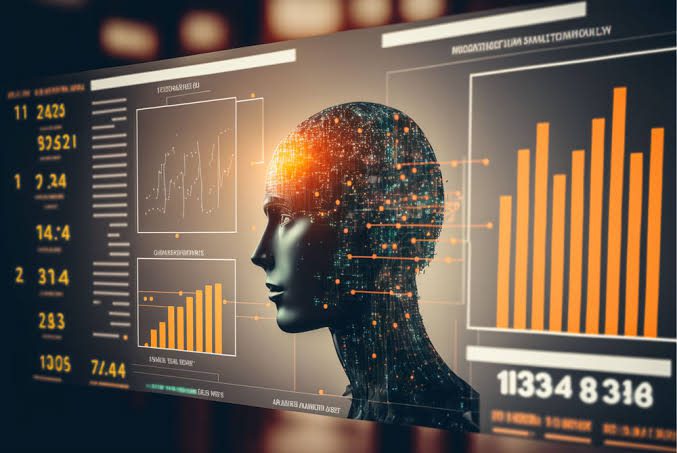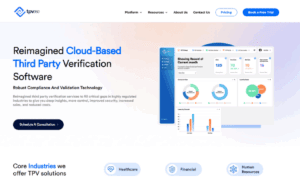Artificial intelligence (AI) and machine learning have become indispensable tools in creating modern digital products. Wherever you look – websites, mobile apps, wearables, and more – AI is making the development process faster, smarter, and more efficient.
According to recent surveys, over 50% of design and development teams now utilize AI in some form for ideation, design, or quality assurance testing. The rise of powerful and accessible AI tools has transformed what is possible in crafting digital experiences.
In this article, we will provide several examples of how AI is revolutionizing digital product design and development. From AI-assisted design to predictive analytics, we will explore the innovative ways leading agencies are tapping into artificial intelligence.
We will also showcase how Emerge, a top digital product agency, leverages leading-edge AI technology to craft intuitive, immersive digital experiences. The agency’s expertise in leveraging AI allows it to efficiently design, test, and optimize digital products to the highest standards.
By embracing AI, forward-thinking agencies are enhancing digital design while gaining a competitive advantage. AI empowers teams to be more creative, work faster, and exceed user expectations. Read on to see the future of AI-powered digital product development.
AI-assisted design
One of the biggest impacts of AI is in assisting designers with mundane, repetitive tasks. This allows them to focus their efforts on more strategic, creative work. There are now a number of AI tools that automate parts of the digital design process:
Wireframing – Tools like Anthropic and Waste can generate wireframe prototypes according to specified design parameters. This automates the early ideation process. Designers simply input requirements and the AI creates multiple wireframe options instantly.
Prototyping – Similar AI tools can turn wireframes into interactive, clickable prototypes in a fraction of the usual time. Boundless AIs and Proto.io utilize AI to streamline prototyping and allow rapid iteration.
Visual design – Platforms like Firedrop use AI to create branding elements like color palettes, fonts, layouts, and more. This kickstarts the visual design process. AI can also refine designs by suggesting improvements.
Testing – AI can simulate user interaction to detect issues with prototypes and optimize designs without lengthy QA testing. This allows designers to refine UIs and UXs faster.
The automation of routine design tasks grants designers more time for strategic work. AI becomes an intelligent assistant that amplifies human creativity. Leading agencies leverage these AI tools to boost design efficiency and innovation.
Generative design
In addition to assisting designers, AI can also generate design elements from scratch:
Icons – Tools like IconStein use machine learning algorithms to generate thousands of unique icon ideas based on keywords. This provides fresh inspiration.
Color palettes – Services like Designs.ai and Coolors can instantly generate color palette options that meet specified criteria. This saves designers hours of work
Layouts – Platforms like Anthropic can create full page layouts, adjusting columns, fonts, images, etc. to fit brand guidelines. This kickstarts the layout process.
Animations – Animation generators can take static designs and create dynamic animated interactions, micro-animations, transitions, and prototypes.
With generative AI, designers can instantly produce numerous design options to choose from. The AI becomes a co-creator, handling basic design tasks while designers focus on selecting the best outputs. A digital product agency can use generative design to boost ideation and produce cutting-edge digital products.
Intelligent QA testing
AI and machine learning are revolutionizing quality assurance testing by automating the most tedious parts of the process. Some ways AI improves testing:
- AI can crawl through apps and websites, finding bugs and performance issues without human supervision. Tools like Functionize and Applitools use smart visual analysis.
- AI testing platforms can generate their own test cases instead of relying on manual scripting. This expands test coverage and scenarios. AI tools like Testim and Eggplant AI accomplish this through machine learning.
- AI can reuse and adapt old test scripts to a new build, saving QA teams significant time. Tools like TestCraft automate this test maintenance.
- With capabilities like image recognition, AI can verify visual elements, UI functionality, cross-browser compatibility, and more. Platforms like Screenster and Experitest automate visual QA.
- AI dashboards provide visual analytics into testing, allowing for continuous optimization.
With AI assistance, digital agencies can deliver thoroughly tested products while slashing the QA timeline. Emerge utilizes bleeding-edge AI testing tools to quickly catch bugs, reducing defect density in its digital products. Smarter QA enables quicker time-to-market.
Data-driven development
AI allows agencies to analyze user data and translate insights into design and development decisions. By leveraging usage metrics and other analytics, AI-driven development enables:
- Personalization – AI tools can analyze customer data to customize and tailor experiences for each user. This creates more relevant, engaging digital products.
- Predictive analytics – By detecting patterns in data, AI can anticipate user needs and predict popular features. This allows agencies to proactively meet demand.
- Optimization – AI can pinpoint friction points in UX through data and suggest modifications to improve metrics like conversion rates.
- A/B testing – AI can rapidly test variations of design or functionality and identify the optimal version based on performance.
- Dynamic content – AI can adjust on-screen content and recommendations in real-time based on user actions and preferences.
With AI analyzing user data around the clock, agencies can rapidly refine and enhance digital products post-launch. Emerge uses AI-driven development to boost customer satisfaction, engagement, and business outcomes for its clients.
Predictive analytics
With massive amounts of customer data, AI now has the capability to anticipate user needs before they arise. Using predictive analytics, AI can:
- Forecast design trends – By analyzing emerging patterns in digital design, AI can predict upcoming trends like colors, layouts, and interactions that will engage users.
- Anticipate desired features – AI can determine new features users are likely to want based on correlating data signals like search keywords and usage metrics.
- Model future problems – AI can identify potential pain points users may experience in the future based on evolving user patterns.
- Simulate scenarios – AI can run simulations using predictive models to estimate the impact of changes to digital products.
- Strategize roadmaps – AI can advise product teams on the optimal development roadmap based on predictive insights.
With AI simulation and forecasting, agencies can build future-proof digital products aligned with target users’ forthcoming needs. Anthropic recently showcased an AI assistant able to predict users’ problems before they occur. Emerge utilizes predictive analytics in its design and development process to create cutting-edge digital experiences.
Digital Product Agencies: Where AI Comes to Life
As discussed throughout this article, artificial intelligence is revolutionizing how modern digital products are designed and developed. But who is responsible for bringing these innovative AI-powered digital products to life? Leading the way are elite digital product agencies.
Digital agencies are companies that specialize in end-to-end design, development, and launch of digital experiences. Using bleeding-edge technologies like AI, the best agencies craft websites, mobile apps, software, and emerging tech products that provide immense value to users:
- Websites – From marketing sites to ecommerce stores and content platforms, digital agencies build immersive, high-converting websites.
- Mobile Apps – Agencies can build and launch fully-functional iOS and Android apps with appealing designs and UX.
- Software – Agencies develop and iterate on SaaS, enterprise, and other software solutions.
- Emerging Tech – VR, AI, IoT, and other emerging tech are integrated by digital agencies into digital experiences.
The best digital agencies provide end-to-end services from research, UX design, visual design, and development through to post-launch monitoring and maintenance.
Top agencies stay on the cutting-edge of digital best practices and leverage the latest technologies like AI to create products that deliver results and value. They become true partners dedicated to their clients’ success.
Preparing for an AI-Driven Future of Design
The examples and tools showcased illustrate how artificial intelligence is fundamentally transforming digital product design and development. Where once human-crafted wireframes and manually written tests were the norm, AI has automated large parts of the creation process.
AI empowers designers to be more creative by handling monotonous tasks. It acts as a co-pilot, generating ideas and accelerating workflow. For developers, AI enables data-driven decision making and robust testing automation.
The end result is digital products perfectly tailored to users’ current and future needs. Exciting applications of predictive analytics, dynamic content, and intelligent QA will shape the next generation of immersive, personalized digital experiences.
By embracing AI-enabled tools, leading digital agencies like Emerge are able to efficiently design, test, and refine digital products to meet today’s user expectations. With expertise in leveraging the latest AI capabilities, Emerge is crafting pioneering websites, apps, and platforms that set new standards for the digital space.
The future is here with AI. Agencies that fail to adopt artificial intelligence will quickly find themselves outdated. In contrast, those that master AI-driven development will deliver market-leading digital innovations.



































